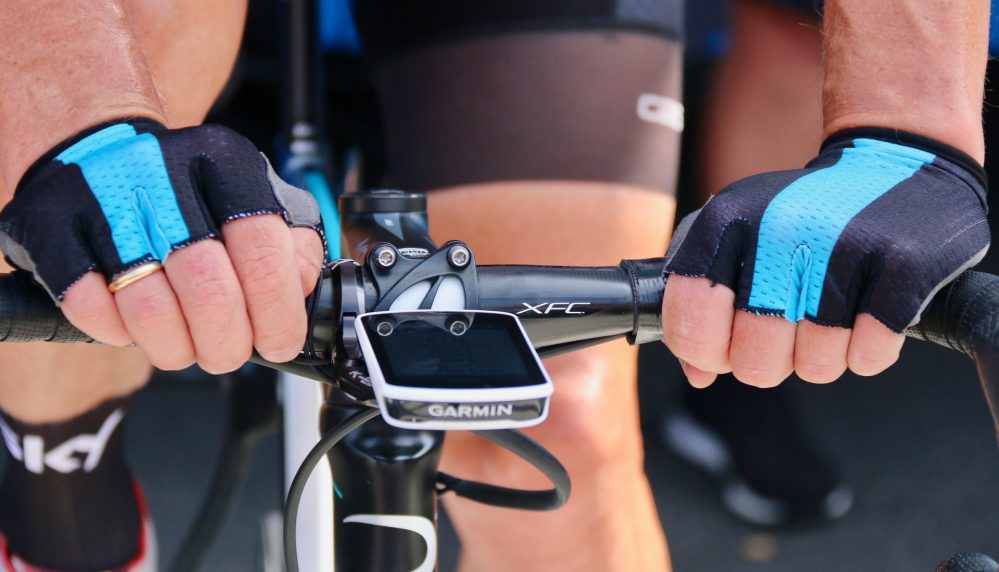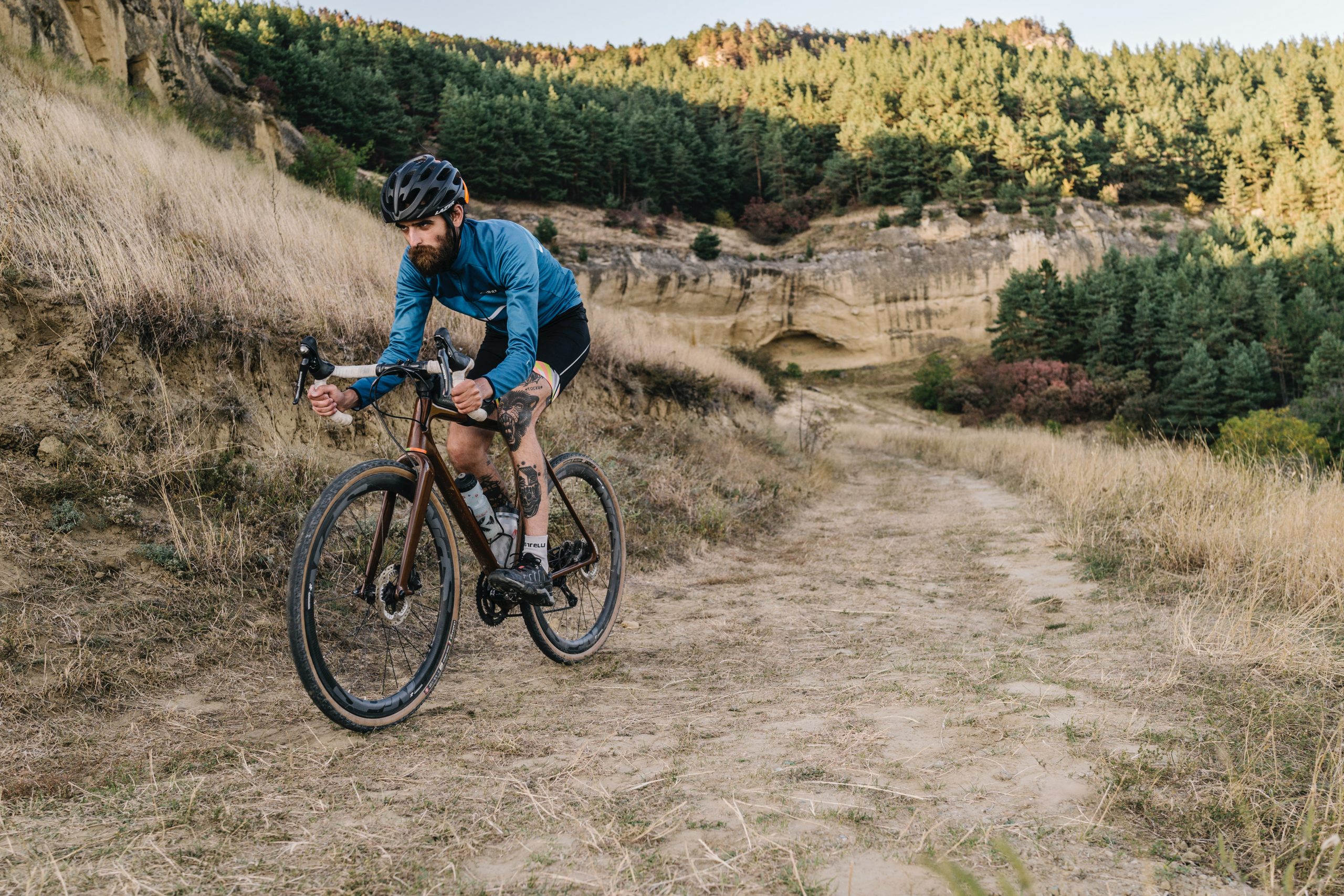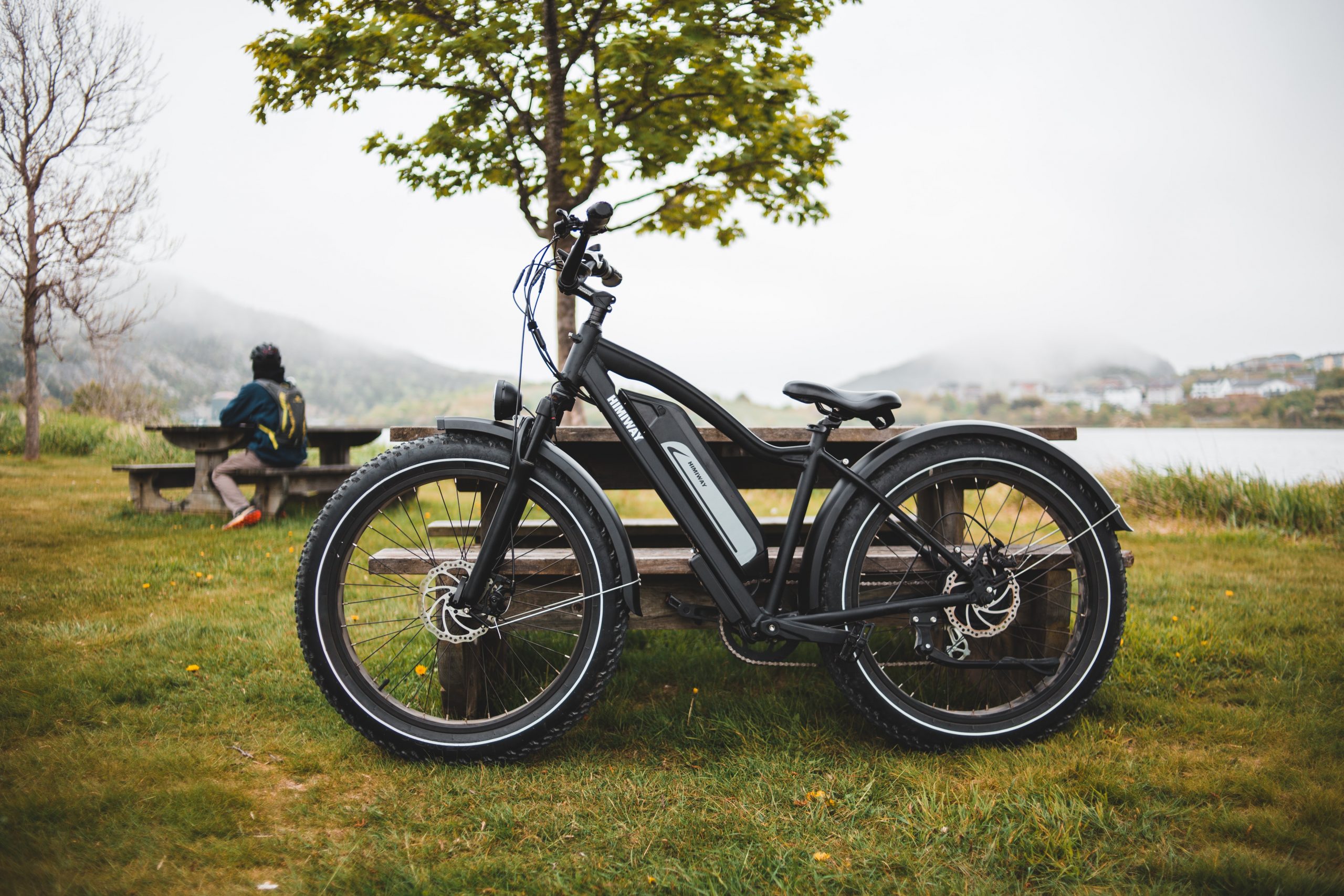Cycling gloves are optional but come with many advantages for a bike rider. If you are considering buying a pair but want to learn more about them, this is the article for you. First, we show you all the benefits of wearing gloves when riding your bike. Then, we go through different types of cycling gloves and how to choose from them. Furthermore, if you ever wondered “what are cycling gloves made of?”, in this article you will find information about every type and the materials used to make them.
From summer mitts to winter lobster gloves — learn all about cycling glove types below.
Cycling mitts

Short finger gloves, also known as mitts, are the most commonly used type of cycling gloves. They are preferable for bike riding in the summer when the weather is hot, as they offer excellent breathability. Due to extra palm padding or inserted gel, they provide an extra layer of cushioning between the hands and the handlebars. In addition, they protect your hands in case of a fall.
Summer mitts are usually made of thin mesh in the back and leather fabric in the palm area. The mesh part helps in reducing the heat, while a leather palm adds grip and comfort to your ride. The latest versions of cycling mitts use synthetic leather backed with lightweight and breathable materials. Depending on the model, they may feature velcro or elasticated fasteners on the wrist, inserted gel in the palm area, fabric pieces to help put them on and take them off, or a microfibre pad on the back of the glove that can be used as a nose and face wipe.
Full-fingered gloves
Sometimes riders choose full-fingered gloves over cycling mitts, as they want more protection from the weather or in case of accidents. Full-fingered gloves are perfect for bike riding when the weather gets cold. And, when it rains, the silicone finger grippers help you control braking and gearing. Many riders use these gloves because of their adaptability, as they can be light and flexible enough to ensure comfort and coolness while still providing protection when riding. Mountain bike riders use full-fingered gloves made from tougher materials with panels on the outer side of the glove for impact resistance in case of a crash. In more expensive gloves, these panels are built from molded plastic or carbon composite.
There are various choices when it comes to full-fingered gloves, including all seasons of the year. They can be used in summer, having features similar to summer mitts but with long fingers. Or, they can be used in-between seasons, having thicker fabric, thus offering more thermal protection. During winter and rainy weather, full-fingered gloves can be waterproof and provide more insulation.
Winter gloves

During winter and in cold weather, make sure to choose a pair of gloves that will ensure protection from the cold. Winter gloves provide insulation and keep your hands warm and dry. They usually include fleece linings and insulating materials. Sometimes, they are made of merino wool or leather. Some simpler designs are made of lightweight neoprene and will keep your hands warm in mild weather. But when it gets cold, you will need waterproof and thermal gloves. These are usually made of various layers, including a microporous membrane that protects your hands from water and cold while also providing ventilation. Different models can include cuffs on the wrist to protect the part between the jacket and the glove.
Something to keep in mind when it comes to winter cycling gloves is that big and heavy models can compromise the dexterity for braking and shifting. High-end winter gloves will have thinner materials while keeping their thermal abilities and offering more accurate finger length and overall comfort.
There are various designs you can choose from, starting from the standard five-finger bike gloves to the three- and four-finger gloves. Below you can find out more about two particular types of winter cycling gloves: lobster gloves and pogies.
Lobster gloves
These gloves use a strategic separation between fingers, providing better dexterity than a five-fingered winter glove. Lobster gloves group your pinkie and ring fingers together, separated from your index and middle fingers that are also grouped together while offering warmth and enough freedom to work handlebar controls. They are called lobster gloves because the finger design looks like a lobster claw. They also feature a large cuff that covers the gap between the glove and the jacket, not allowing cold air to get inside.
Pogies
If you enjoy riding your bike even when the weather is too cold, pogies are the warmest option. Originally made for use in kayaking, pogies are gloves that attach to the handlebars of your bike and cover the brake levers, shifters, and hands. They keep your hands warm during extreme weather when typical winter gloves are not enough. Pogies protect your bike components as well as your hands. While your hands warm up inside the pogie, they keep all the controls warm as well. Thin gloves are usually worn underneath, or you can choose to go gloveless. The outer part of these gloves is weather and wind resistant. They provide the best dexterity compared to other winter gloves. Some also have reflective material to increase visibility on the road.
Waterproof cycling gloves
Riding your bike when the weather is wet can be dangerous if you are not wearing the right gloves. Waterproof cycling gloves are perfect for riding in winter or rainy weather. Apart from protecting you from the cold and keeping your hands dry, they provide improved grip by often including silicone grippers. Waterproof cycling gloves are usually made from neoprene fabrics. When choosing waterproof gloves, one thing to keep in mind is opting for a pair that does not compromise breathability.
Mountain biking gloves
Mountain biking gloves are a crucial piece of gear for any off-road cyclist. They protect your hands from the elements, help reduce fatigue, and provide additional grip on handlebars. They are typically made from durable materials, such as leather or synthetic fabrics, and feature padding in the palm to absorb vibrations from the bike. Mountain biking gloves also often have a silicone or rubber grip on the fingers and palm for improved grip, as well as touchscreen compatibility so you can easily use your phone while riding. Some gloves also come with wrist closures or adjustable straps to keep them securely in place while riding.
Road biking gloves
Road biking gloves are an important accessory for any road cyclist. They provide comfort, grip, and protection for your hands. They are typically made from lightweight and breathable materials, such as mesh or synthetic fabrics, and feature padding in the palm to absorb road vibrations. The gloves are often designed with a secure fit, such as elastic cuffs, to keep them in place while riding. Some road biking gloves also come with touchscreen compatibility, allowing you to use your phone or other devices without removing your gloves. Additionally, some road biking gloves have reflective accents for increased visibility when riding in low-light conditions. These gloves are an essential item for any road cyclist, helping to enhance the riding experience while keeping your hands safe and comfortable.
Which Gloves Are Right for You?
Choosing the right gloves essentially means choosing a pair that fits you well and is made of a material suitable for the weather conditions you ride in. To find the perfect pair of cycling gloves for you, you need to consider the advantages that come with different materials. Let’s go through the benefits of the most commonly used biking glove materials, including the ones mentioned above and many more:
- leather (adds grip on the palm)
- mesh (improves airflow)
- acrylic (breathable and stretchy)
- gel (improves shock absorption)
- neoprene (water repellent)
- polyester (durable and breathable fabric)
- polyurethane (breathable fabric)
- fleece (warm and insulated)
- spandex (stretchy)
- rubber (water resistant)
Next, you need to choose the right glove size. A glove that is too big or too small, apart from being uncomfortable, may compromise your safety. If a glove is too big, you will lose grip and find it difficult to work the brakes and gears. A too-small glove can block blood flow, thus making your hands cold. To get the best fit, you need to measure your hand and refer to a biking glove chart.
Conclusion
In conclusion, there are different cycling gloves to choose from, made from various materials depending primarily on the weather and temperature. When selecting a pair for yourself, it is crucial to pay special attention to the size of the gloves and whether the material they are made of suits your needs and weather conditions.




